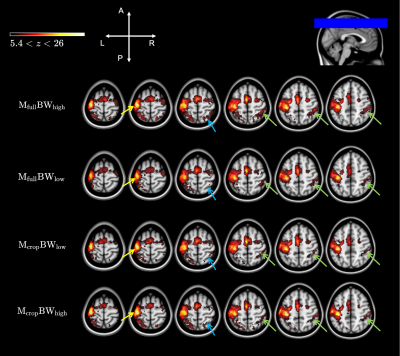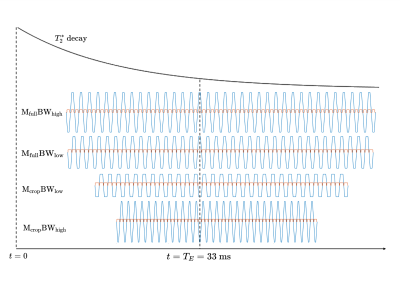Didi Chi1,2, Rebecca Glarin2, Yasmin Blunck1,2, Catherine E. Davey1,2, and Leigh A. Johnston1,2
1Department of Biomedical Engineering, The University of Melbourne, Parkville, Australia, 2Melbourne Brain Centre Imaging Unit, The University of Melbourne, Parkville, Australia
1Department of Biomedical Engineering, The University of Melbourne, Parkville, Australia, 2Melbourne Brain Centre Imaging Unit, The University of Melbourne, Parkville, Australia
Matching k-space coverage to spatial smoothing provides higher SNR and more specific BOLD activation, further affected by varying sampling speed via BW and echo spacing variation. Low BW is important for image SNR, however high BW should be chosen for quality of activation maps.

Group level activation maps for the four cases; yellow arrows: primary sensorimotor cortex (M1, S1, Mfull-BWhigh: z=13.09±3.7, Mfull-BWlow: z=11.76±3.3, Mcrop-BWlow: z=13.03±3.4, Mcrop-BWhigh: z=14.23±3.9) blue arrows: superior parietal lobule (SPL-L), green arrows: primary somatosensory cortex (S1-L).
